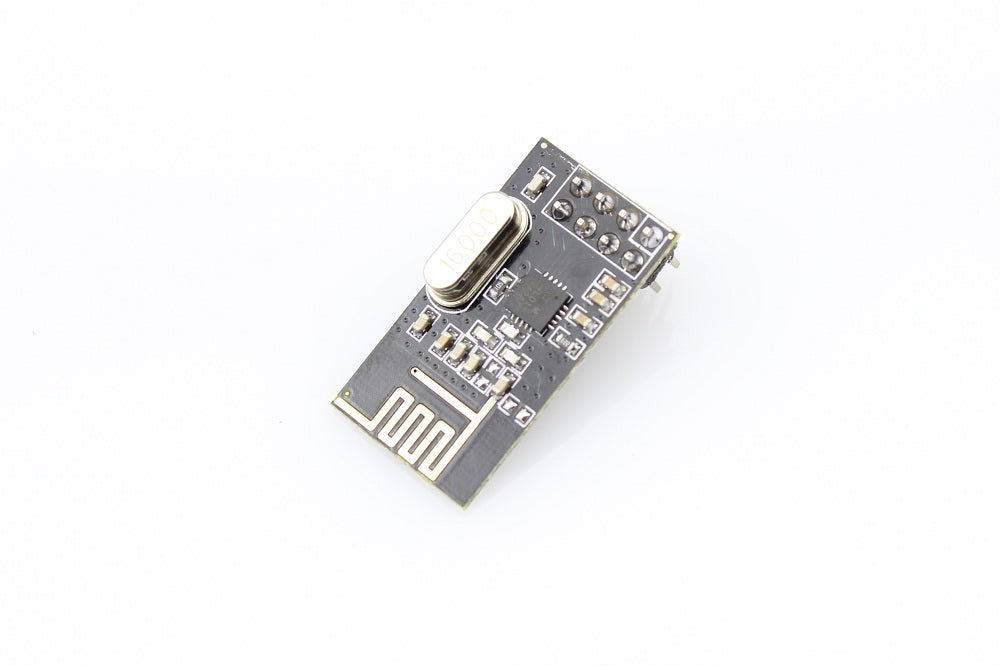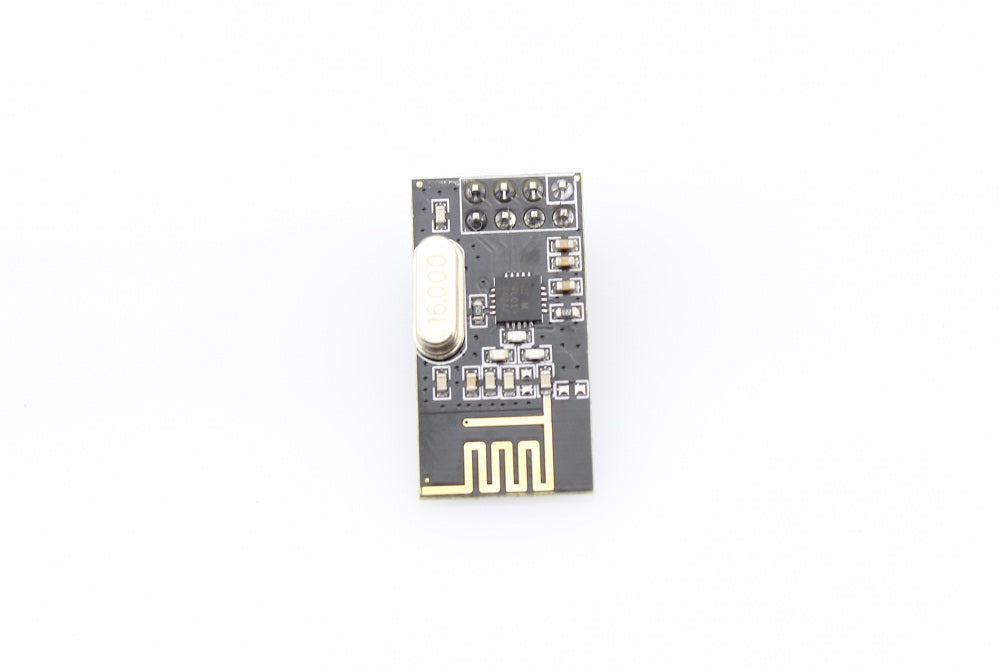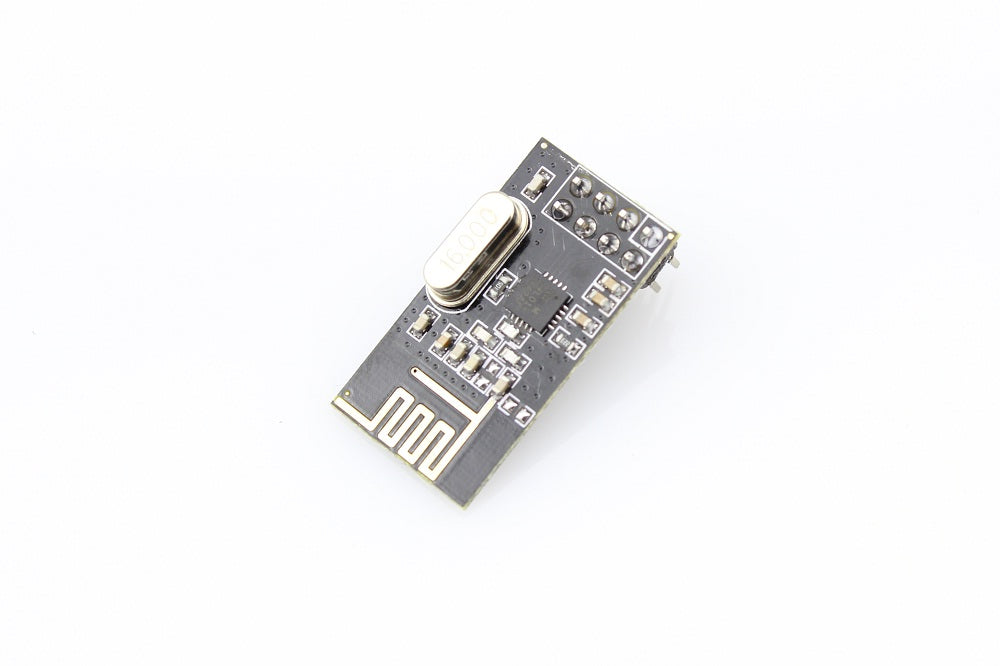RF NRF24L01 Module
RF NRF24L01 Module - There's a wide range of wireless communication protocols available in the market today. You could choose from WiFi, GSM/GPRS, Bluetooth, IR. We also have an RF transceiver available in the market, and each of these protocols has its uniqueness.
This RF module has the NRF24L01 transceiver IC from Nordic Semiconductor that operates in the 2.4GHz band. This module has 2.4GHz license-free ISM band operations worldwide, can define the data transfer rate with 250kbps, 1mbps, and 2mbps. Since it is from Nordic, they also applied the usage of the ShockBurst(SB) hardware protocol accelerator. You can power this with 1.9V to 3.6V, with its I/O port logic at 3.3V or 5V. The transmitting rate is at +7dB, and receiving sensitivity of -90dB. It can transmit data with a range of up to 250m in an open area.
You could connect it to your Arduino with the SPI pins(MISO/MOSI) and power supply of 3.3V (VCC/GND).
We also have the NRF24L01 with a built-in antenna for better signal coverage. For easy breadboard applications, we recommend using this adapter.
Frequently asked questions about "RF NRF24L01 Module"
Q1: What is the NRF24L01 module exactly?
Using a Nordic Semiconductor nRF24L01+ chip, the NRF24L01 module is a wireless transceiver that operates on the 2.4 GHz frequency range. It is frequently employed for low-power wireless communication in a variety of applications, including wireless sensor networks, data transfer, and remote control.
Q2: What is the NRF24L01 module's range?
With line-of-sight communication, the NRF24L01 module's maximum range is around 100 metres in open space. The range might change, though, depending on the surroundings and any impediments.
Q3: What is the NRF24L01 module's data transmission rate?
The NRF24L01 module's data transfer rate may be set up to 2 Mbps. The distance between the devices, interference, and other comparable factors may all have an impact on the actual data rate.
Q4: How can I link my microcontroller to the NRF24L01 module?
The SPI bus may be used to link the NRF24L01 module to your microcontroller. For the module to function properly, a number of control signals like CSN (chip select), CE (chip enable), and IRQ (interrupt request) are needed. Depending on the microcontroller and library used, the precise wiring and setup may change.
Q5: What is the NRF24L01 module's power supply voltage range?
The typical power supply voltage range for the NRF24L01 module is 1.9V to 3.6V. Some versions, however, could offer a broader voltage range.
Q6: Is it possible to combine numerous NRF24L01 modules in one network?
By giving each NRF24L01 module a different address, it is possible to utilise several NRF24L01 modules in the same network. The same channel and data rate can be used by the modules to communicate with one another.
Q7: Is the NRF24L01 module Arduino compatible?
The NRF24L01 module is compatible with Arduino, and utilising the SPI interface, it is simple to connect to an Arduino board. For Arduino, there are several libraries that support the NRF24L01 module.
Q8: What makes the NRF24L01 different from the NRF24L01+?
An upgraded version of the NRF24L01 module, the NRF24L01+ has advantages including increased transmit power, reduced current use, and superior noise immunity. The NRF24L01+ module may often be used in its stead because it is backward compatible with the NRF24L01 module.
Q9: Can you transmit audio or video with the NRF24L01 module?
No, because to its constrained bandwidth and slow data rate, the NRF24L01 module is not appropriate for transmitting audio or video. It is primarily intended for low-power, low-data-rate applications like sensor networks and remote control.
RF NRF24L01 Module
RF NRF24L01 Module
550 in stock
Product Code
SKU:AB239
Couldn't load pickup availability




